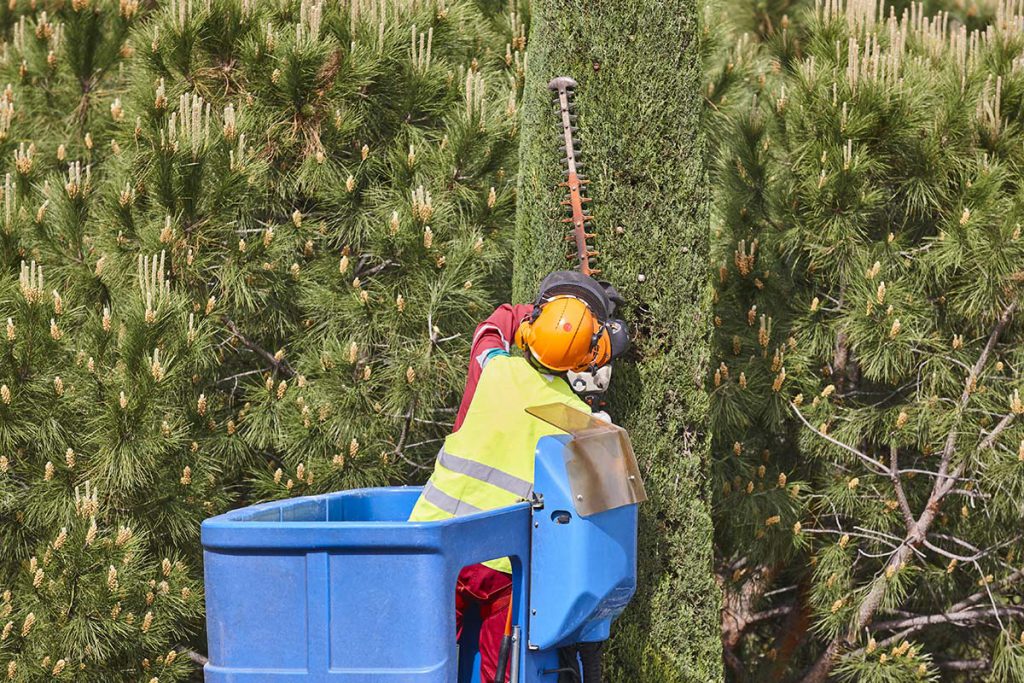A crucial aspect of caring for deciduous fruiting lemon trees is pruning. By pruning a lemon tree, you can improve the branch set and thus reduce the possibility of a branch breaking from heavy fruit. Additionally, it can increase aeration, improve the availability of light, and even improve the quality of the fruit itself. Lemon trees, much like other fruiting trees, require cutting back in order to create healthier fruit. That said, how do you prune a lemon tree? When is the best time to prune a lemon tree? These are all important questions that we will answer in this article.
Lemon trees are less likely to break under the weight of larger fruits as citrus wood is strong. In addition to that, citrus trees can also fruit throughout, including shaded areas, making the need to prune for light improvement less important. That said, it is still incredibly important to prune your lemon tree on occasion. Young trees require this to ensure that any weak limbs are pruned out and so that adult trees with regular sprouts are kept in check. It is also important to prune for dead or crossed limbs as this can cause serious health issues and impede future growth.

How to prune a lemon tree
Lemon tree pruning requires that you use razor sharp, clean pruning shears or saws, and of course, gloves to protect yourself from the thorns. Although the bark of a citrus tree is indeed very strong, the bark is thin and quite easy to damage, so great care must be taken throughout the pruning process.
You must always ensure that pruning cuts take place with the blade pointing toward the tree, in order to reduce any nicking. Also make sure that you do not cut a branch flush with the trunk or on larger branches. The overall goal when pruning citrus is preserving the branch collar. This is the area around the base of a limb which tends to look wrinkled. We call this area the “branch defence zone”. This is because it activates callus tissue that can grow when over-pruning occurs in order to defend against decay.
Lemon tree pruning should be done using a three-cut system for any branches that are thicker than an inch in order to prevent any unnecessary damage to the bark.
- Begin with an angled cut 10-12” (5cm) out from the branch joinery
- Cut back a third of the way through the branch from the underside
- Move several inches up the branch and cut from above, thus severing the branch
- DO NOT prune more than a third of the tree in a year (this is dangerous for the tree)
- Pruning should begin a year or two into the tree’s life for training
- Keep the tree in the region of 8-10 feet
- Only remove branches that are unnecessary (crossed, dying, or diseased limbs and sprouts)

When is the best time to prune a lemon tree?
Knowing when to prune lemon trees is important. You need to get the right time otherwise you will risk losing the year’s yield and when life doesn’t give you lemons…well, that sucks too! So, when is the right time to prune a lemon tree? You should begin after it has produced its first full harvest of fruit, allowing it plenty of time for recovery prior to the upcoming fruiting season.
Pruning lemon trees in Australia is a little different due to the warmer climate. This gives you a little more in the way of room when it comes to timing. You can prune your lemon tree in the summer, but just don’t prune the tree when the climate is at its hottest as this is almost certainly not the best time to prune a lemon tree. In any case, Feb through Month tend to be some of the best months for pruning.
(Pro Tip: You can prune whenever the tree is producing flowers).
How to trim a lemon tree
Trimming and pruning are often used interchangeably, however, there is a different between the two terms. You see, removing dead, diseased, or crossed branch is pruning. However, trimming on the other hand occurs when you wish to cut back an overgrown plant. So, if your lemon tree is growing a little wild and you suspect that it is too large, you can cut back any unnecessary bulk. Again, just remember not to trim more than a third of the tree in a year as the trauma can kill it. Be mindful when over-trimming and consult your local arborist if you require more information on how much you can get away with.

Lemon tree maintenance
Lemon tree pruning is all well and good, but without the proper care and maintenance, it won’t be enough. Here are some important things that you should know about caring for your tree all year round.
- Climate: Most lemon trees do wonderfully in warmer climates as they are drought tolerant, yet sensitive to frost
- Aspect: Lemon trees should have full sunlight, whilst being protected from strong winds and frost
- Soil: Lemon trees are flexible with soil but prefer well-drained and acidic soil
- Planting: When planting a lemon tree, you can do so at any time of year in warmer climates but be sure to water regularly. Citrus trees thrive in large pots. However, if you are planting in the yard, make sure that the soil is kept moist, that it is in a sunny location, and to give it regular citrus fertiliser
- Water: Lemon trees grow wonderfully in moist soil, so long as it isn’t too soggy. Aim to water the tree every 7 to 10 days for the best results during summer. Be mindful of overwatering as citrus can suffer from crown and root rot if overdone
- Feeding: Citrus use up an awful lot of energy in order to feed their flowering and fruiting. Thus, you should feed your tree plenty if you wish to have the best yields. You can tell from stunted growth and yellowing leaves that the tree is undernourished. Be sure to fertilise and feed well (twice yearly in Feb and August).
Conclusion
Lemon trees are beautiful and the fact that they bear fruit make them even more of a pleasure to have around your home. Just be careful not to overdo it with the pruning. Follow these steps carefully and you shouldn’t have any problems. However, should you be unsure, always consult your local arborist and seek professional assistance for the best results.

